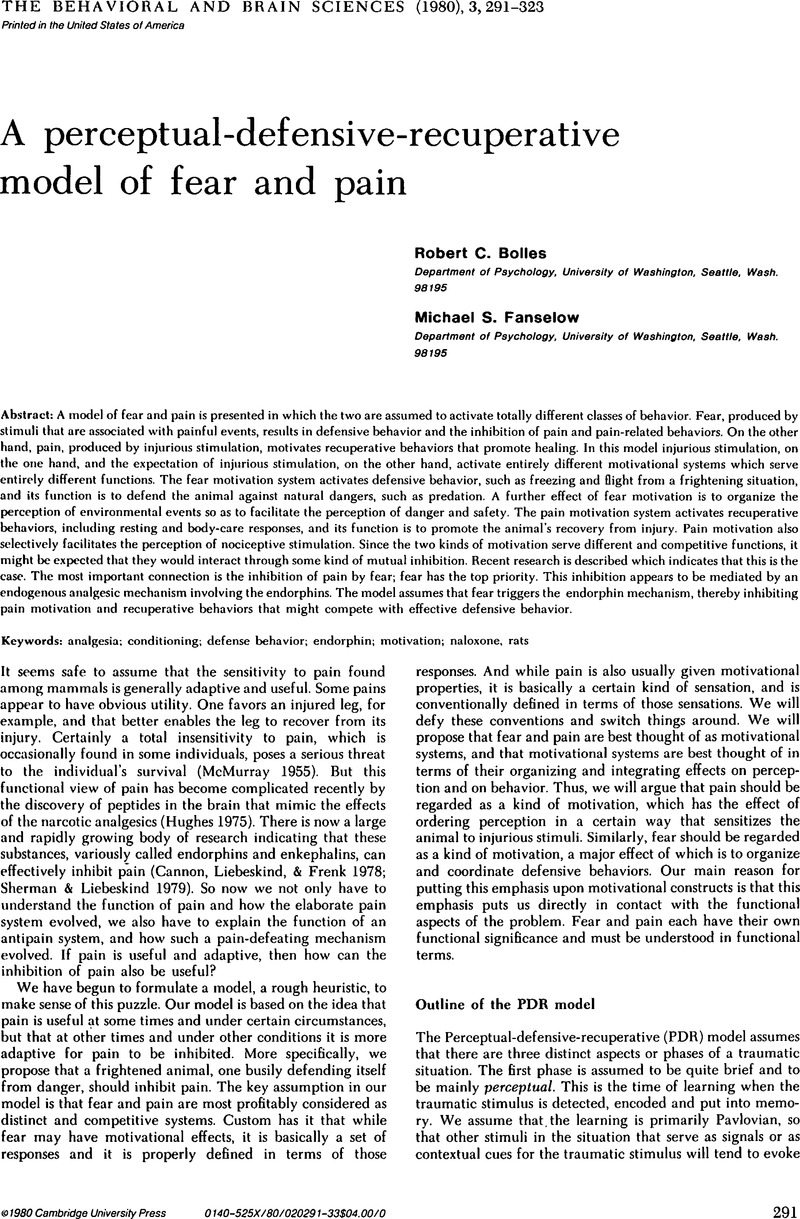Crossref Citations
This article has been cited by the following publications. This list is generated based on data provided by Crossref.
Fanselow, Michael S.
and
Bolles, Robert C.
1982.
Independence and competition in aversive motivation.
Behavioral and Brain Sciences,
Vol. 5,
Issue. 2,
p.
320.
Ursin, Holger
1982.
Pain is pain and fear is fear.
Behavioral and Brain Sciences,
Vol. 5,
Issue. 2,
p.
318.
Mackintosh, N. J.
1982.
Conditioning as compensation?.
Behavioral and Brain Sciences,
Vol. 5,
Issue. 2,
p.
318.


